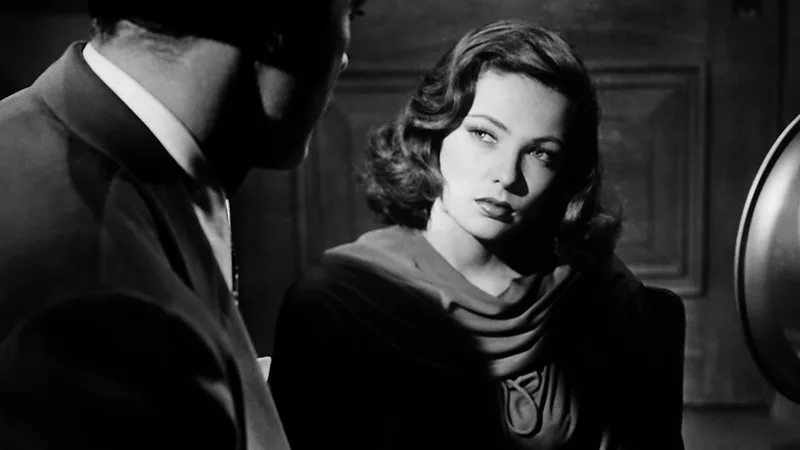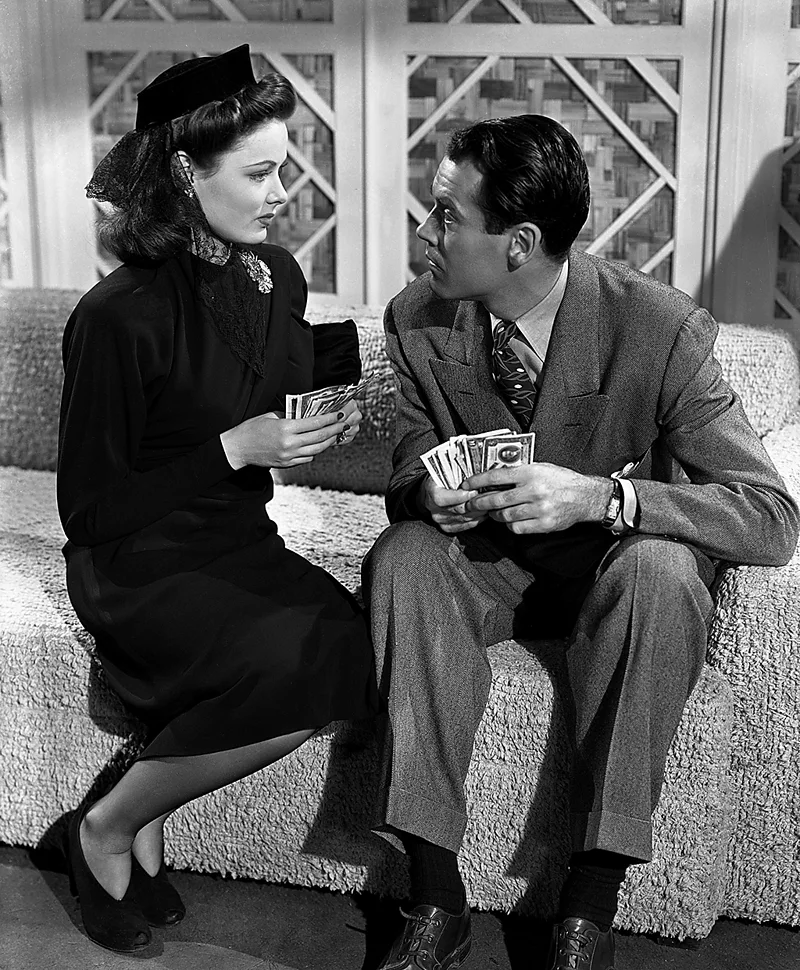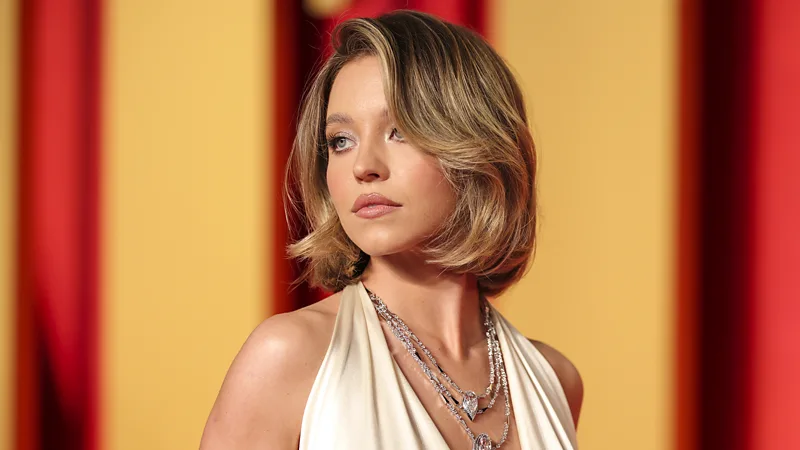The pitfalls of being 'the most beautiful woman in movie history'
 Beauty, particularly in women, has been historically revered yet also fraught with complexities that impact careers and legacies. As society evolves, has our perception of beauty truly shifted over the years?
Beauty, particularly in women, has been historically revered yet also fraught with complexities that impact careers and legacies. As society evolves, has our perception of beauty truly shifted over the years?
The concept of female beauty is multifaceted, influenced by power dynamics and cultural symbols, with ideals that change across different time periods. Despite its ever-changing nature, beauty remains a significant aspect of Western culture, albeit often criticized as superficial. Public figures labeled as the epitome of beauty often face challenges and scrutiny.
Gene Tierney, a Hollywood actress of the 1940s, was hailed by studio executives like Darryl Zanuck as the ultimate symbol of beauty in film history. With her striking aqua-blue eyes and perfectly symmetrical features, she epitomized the bombshell aesthetic of her era, alongside contemporaries such as Rita Hayworth and Ava Gardner. Despite being among a group of glamorous stars, Tierney stood out as the quintessence of beauty.
The British Film Institute's April season, "Out of the Shadows: The Films of Gene Tierney," curated by Aga Baranowska, aims to shed light on an actress whose talent often took a backseat to her beauty. By showcasing some of her lesser-known works, the season also prompts reflection on the impact of beauty when projected onto the silver screen. Gene Tierney's journey in the film industry commenced in the early 1940s when she signed with 20th Century Fox at the age of 19. Hailing from a privileged background in Fairfield, Connecticut, where she debuted in society at 17, Tierney was initially expected to marry into Yale's elite. However, her stunning appearance quickly caught the attention of studios, leading to her major screen debut in 1942's screwball comedy "Rings on her Fingers," co-starring Henry Fonda.
Gene Tierney's journey in the film industry commenced in the early 1940s when she signed with 20th Century Fox at the age of 19. Hailing from a privileged background in Fairfield, Connecticut, where she debuted in society at 17, Tierney was initially expected to marry into Yale's elite. However, her stunning appearance quickly caught the attention of studios, leading to her major screen debut in 1942's screwball comedy "Rings on her Fingers," co-starring Henry Fonda.
Despite the publicity's focus on her affluent upbringing and her persona of poised elegance, Fox struggled to define Tierney's on-screen identity. Described as a debutante, she was often cast in diverse roles as the studio attempted to find her niche. However, her roles seemed mismatched; deemed too sultry for comedy yet too refined for lower-class characters, Tierney even found herself portraying racially ambiguous roles, with makeup altering her appearance to fit the then-fashionable but problematic "exotic" look.
Her on-screen gifts
Tierney's affinity for film noir shines through in her notable roles, particularly in "Leave Her to Heaven" (1945) and "Laura" (1944). Collaborating with director Otto Preminger in films like "Where the Sidewalk Ends" and "Whirlpool" in 1950 further showcased her talent in moody noir settings, often opposite Dana Andrews. In "Night and the City" (1950), set in London, her role is somewhat subdued, but the film itself is exceptional.
Tierney had a remarkable ability to portray vulnerability beneath a cool exterior, evident not only in crime dramas but also in serious dramas like "The Razor’s Edge" (1946), an underrated adaptation of W. Somerset Maugham's work.
In "Leave Her to Heaven," Tierney's stunning portrayal of a possessive and manipulative wife earned her an Oscar nomination. Unlike the typical femme fatale, her character exudes a pristine facade while harboring dark impulses. Similarly, in "Laura," her beauty is central to the story, immortalized in a painting that captivates the characters and the audience alike. This enduring image reflects the timeless allure of cinema and the way it preserves beauty, untouched by the passage of time. According to Elena Parker, the founder of Gene Tierney Online and her forthcoming biographer, Gene Tierney appreciated being remembered primarily for her iconic role in "Laura," acknowledging that this enduring association with the film has granted her a lasting presence in beauty culture. However, Parker suggests that focusing solely on Tierney's beauty or tragic personal struggles, such as her mental health issues and her daughter's disabilities resulting from rubella exposure during pregnancy, overlooks her contributions as an actress.
According to Elena Parker, the founder of Gene Tierney Online and her forthcoming biographer, Gene Tierney appreciated being remembered primarily for her iconic role in "Laura," acknowledging that this enduring association with the film has granted her a lasting presence in beauty culture. However, Parker suggests that focusing solely on Tierney's beauty or tragic personal struggles, such as her mental health issues and her daughter's disabilities resulting from rubella exposure during pregnancy, overlooks her contributions as an actress.
The BFI season aims to shift the narrative away from stereotypes like the "tragic beauty" trope, recognizing Tierney's talent beyond her appearance or personal challenges. In her memoir "Self-Portrait," Tierney herself emphasized the importance of her career being based on more than just her looks. She rejected the idea that her beauty was the sole factor in her success or struggles, noting that mental health issues affect people regardless of their appearance.
How beauty standards have shifted – or not
Looking back at stars like Tierney from the 1940s as icons of female beauty may appear outdated, considering the significant shifts in beauty standards since then. During Tierney's time in Hollywood, body diversity was not a concern, and the ideal feminine shape was slim and hourglass, reinforced by diets, corsets, and figure-enhancing dresses.
Comfort was also not a priority in the beauty standards of that era, which preceded today's trends like baggy jeans and athleisure. The notion of attractive femininity was narrow, typically encompassing traits like being white, thin, meticulously groomed, and devoid of visible imperfections like freckles, fat, or racial differences (except when actors were cast in roles that should have been given to people of color, a practice that was unfortunately common).
Male-dominated studio executives and their teams of makeup artists were responsible for enforcing these standards, using techniques like applying putty to alter facial features and meticulously categorizing and correcting star faces according to prescribed shapes using cosmetics and hairstyling.
As Cathy Lomax, an artist and Hollywood makeup expert with expertise in star studies and cosmetics, highlights in her thesis "Making Up the Star: Makeup, Femininity, Race, and Aging in Hollywood, 1950–1970," the rejection of realism in Hollywood extended to the near-identical makeup worn by stars. Actors like Jean Porter, who was under contract at MGM in the 1940s, noted the uniformity in makeup application, with mouths, eyebrows, and overall makeup appearing strikingly similar across actresses.
Since Tierney's era, some positive changes have occurred in the industry, such as increased body diversity and a growing resistance to fatphobia, racist typecasting, and whitewashing. There's also been a trend toward showcasing real teeth or skin texture onscreen, although this is more common in independent films like Paul Thomas Anderson's "Licorice Pizza" (2021) or Bo Burnham's "Eighth Grade" (2018), and still not prevalent enough to be the norm.
However, Tierney's acknowledgment in her memoir "Self-Portrait" that she endured hunger for two decades in Hollywood because she believed it would enhance her facial contours reflects an enduring aspect of the industry. This is evident in the current popularity of weight-loss drugs like Ozempic, indicating that the entertainment business hasn't progressed as much as hoped in terms of body image issues.
Moreover, the uniformity in beauty standards reminiscent of Hollywood's factory-line approach is mirrored in what New Yorker writer Jia Tolentino has termed "Instagram face" – a phenomenon characterized by cyborg-like features achieved through filters and aesthetic treatments on social media. While beauty standards may have evolved slightly, there remains a persistent pressure to conform to a certain ideal, reminiscent of a Stepford Wife-like consistency.
The current trend of the "no-makeup" makeup look actually has roots in the golden age of Hollywood, despite the overt glamour prevalent during that era. Claims that actresses like Gene Tierney didn't need makeup on-screen because of their perfect skin perpetuate the notion that true beauty transcends the need for makeup, which is often perceived as a tool to conceal imperfections and deceive men, according to Lomax.
Celebrities ranging from Ingrid Bergman to Alicia Keys have been praised for their "no makeup" appearances, regardless of the accuracy of these claims. Historian Kathy Peiss highlights the paradox of makeup's role in beauty culture, noting that even brands like Max Factor, synonymous with Hollywood glamour, emphasized the illusion created by makeup – where it becomes impossible to discern where it begins or ends. However, achieving a natural appearance, much like attaining glamour, often requires the use of various beauty products and techniques.
Today's "most beautiful" stars
 The confusion surrounding beauty standards in Hollywood persists, as evidenced by the experiences of young actresses like Zendaya and Sydney Sweeney, who gained prominence through the television series "Euphoria," where cosmetics were a central theme. Zendaya has discussed adopting an alter ego for red-carpet events and photoshoots, viewing it as a persona she "has to buy" rather than her authentic self.
The confusion surrounding beauty standards in Hollywood persists, as evidenced by the experiences of young actresses like Zendaya and Sydney Sweeney, who gained prominence through the television series "Euphoria," where cosmetics were a central theme. Zendaya has discussed adopting an alter ego for red-carpet events and photoshoots, viewing it as a persona she "has to buy" rather than her authentic self.
Sweeney, whose beauty reflects a classic aesthetic, has faced criticism on social media for being self-aware about her appearance, despite her numerous cosmetics and skincare sponsorships. Both actresses navigate the paradox of beauty enhancement being simultaneously discomforting and celebrated, reminiscent of stars from earlier eras who were contracted to promote makeup.
The symbiotic relationship between Hollywood and the beauty industry has been integral to shaping cultural perceptions of beauty over the past century. Hollywood relied on creating cinematic fantasies for audiences and perfecting the image for the movie close-up, while the beauty industry thrived with the endorsement of film stars.
However, actresses like Tierney demonstrated that performance could intersect with appearance and challenge societal preconceptions about beauty. In "Laura," for instance, the character's transformation into the ideal society beauty under patriarchal instruction mirrors the influence of studio moguls. Similarly, Marilyn Monroe's iconic roles often played on societal expectations of femininity and intelligence, highlighting the complex relationship between women and their beauty in Hollywood narratives.
















































